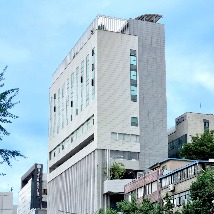반응형
Introduction Materials and Methods Theoretical Basis
출판 유형과 학술논문의 구조에서 서론의 작성 방법에 대해 다룬다. 또한 글쓰기의 대상 재료와 방법, 그리고 이론적 배경 부분을 어떻게 작성해야 하는지 알아본다.
③ Introduction - 서론
학술논문의 서론을 작성하는 방법에 대해 알아본다.
1) Purpose and how to write - 목적 및 작성 방법
INTRODUCTION
• Concise statement of the purpose of the paper and the relevant background. - 근본적 배경
• Must be well, and critically referenced. - 핵심 인용구가 모여있음
• State the problems specifically. - 현 시점의 문제를 안고있음
FIRST SENTENCE:
1) The most important!
2) Must be well-written and informative.
3) Like the Title, capture the reader's interest!
• Should clearly define the problem that is to be addressed and why it is important
• Review the pertinent literature
• State a brief account of past work along with an explanation of how your work ties-in with the past works
• State what is different about your work
• State the method of investigation
• State the principal results of the investigation
• State the principal conclusion(s) suggested by the results
1. Describe the problem
2. State your contributions
Like this: * 관심을 끄는 기법들
• Here is a problem
• It's an interesting problem
• It's an unsolved problem
• Here is my idea
• My idea works (details, data)
• Here's how my idea compares to other approaches
• 1.5 ~ 2 pages (최근 설득을 위해 점점 더 길어지고 있음)
Too many papers begin with the following sentence
In recent years ···.. has received great attention / interest
Tips for writing Introduction
• Use the present tense when referring to work that has already been published.
, but past tense when YOU think the fact is true (your own work or other works)! - It's up to YOU!
• Use the active voice as much as possible.
(e.g., It was recently found that these effects enhance …...
→ Harris and Harris (2006) found that these effects enhance…
• Cite peer-reviewed scientific literature or scholarly reviews.
(Avoid general reference works such as textbooks.)
• Define any specialized terms or abbreviations.
2) What to avoid in Introduction
• Lengthy or unfocused reviews of previous research
• Pretentious language; Repetition; Meaningless phrases
• Irrelevant material
• Avoid using “recently”. Your article or book may be available for a long time. This word will make it look dated in little time.
• Cluttering a paragraph
Don’t have more than one main idea or theme in a paragraph.
* 1 단락 1 메인 아이디어이며, 여러 단락은 유기적으로 연결되어 있어야 한다.
It is better to rather write two or more linked paragraphs.
Don’t overkill with too many citations.
* 오리지널 논문 + 최대 인용수 논문 + 저명한 최신 리뷰 논문 3 개면 충분하다.
Just cite the most important, most recent or review papers
(However, in a review paper it may be appropriate to have an extensive/complete list of references)
3) Examples
Despite the promise of using two-dimensional (2D) atomic crystals in device applications (1,2), the issue of Schottky contact between the semiconducting 2D channel material and the metal electrode has been studied extensively without being resolved. The solution to the Schottky contact issue for silicon is local doping near silicon-metal junctions to reduce the depletion region width and to decrease the contact resistance (3). The 3D doping method used in silicon technology is unavailable in 2D devices, and previous efforts, such as aligning the metal work function with the conduction/valence band edge of 2D semiconductors (4), inserting graphene in the junction by the transfer method (5, 6), and MoS₂ and the metal.
Global structural phase transition in transition metal dichalcogenides (TMDs) has been related to diverse areas of physics, such as metal/band insulators (2), superconductors (8, 9, 10), charge density waves (11), spintronics and valley-optoelectronics (12). Recently, considerable academic interest has focused on atomic-scale observations of local phase transitions in TMDs by using transmission electron microscopy (TEM), highlighting the potential engineering of local material properties (13, 14). However, the electrical and chemical properties of a phase-modified area, or a phase interface between intrinsic- and modified- areas in TMDs, have not yet been clearly verified because of instrumental limitations (14) or inhomogeneous metastable junctions (7).
④ Meterials and Methods - 재료와 방법
학술논문의 재료와 방법을 작성하는 방법에 대해 알아본다.
1) Purpose and how to write - 목적 및 작성 방법
Purpose:
- 다른 사람들이 재현할 수 있어야 한다.
- 어떤 도구를 사용했고, 실험했는지 과정을 기록한다.
- 실험을 정확하게 시행하였는지에 대한 판단 근거를 제시하게 된다. (주로 비주류 논문들에 대한 필터링)
- 다른 논문을 참고하여 심플하게 작성하면 된다. (어느 수준까지 공개 및 작성하는지, 쓰기 쉬움)
• To document all specialized materials and general procedures, so that another individual may use some or all of the methods or judge the scientific merit (validity) of your work
It must be written with enough information so that:
1) the experiment could be repeated by others.
(to evaluate whether the results are reproducible.)
2) the audience can judge whether the results and conclusions are valid.
→ Therefore, the author must provide a clear and precise description of how an experiment was done, and the rationale for the specific experimental procedures chosen
It is not to be a step by step description of everything you did, nor a set of instructions. Don’t tell a story.
The complexity of scientific inquiry necessitates that the writing of the methods be clear and orderly to avoid confusion and ambiguity.
It is usually helpful to structure the methods section by:
1. Describing the materials used in the study
2. Explaining how the materials were prepared
3. Describing the research protocol
4. Explaining how measurements were made and what calculations were performed
5. Stating how the data were analyzed
The writing should be direct, precise and in the past tense.
“Materials” referred to what was examined (eg, humans, animals, tissue preparations) and also to the various treatments (eg, drugs, gases, materials) and instruments used in the study.
Materials may be reported in a separate paragraph or they may be identified along with your procedures.
“Methods” referred to how subjects or objects were manipulated to answer the experimental questions.
How measurements and calculations were made?
How the data were analyzed?
When using a standard method, cite the appropriate literature and give only the details needed.
Ex) Synthesis. CTAQ was synthesized according to procedures previously reported by our group (Scheme S1 in SI). ⁴⁴
Ex) Synthesis. 4 and 5 were synthesized according to the reported recodures. ¹⁴
Include specialized chemicals, biologicals, and any equipment or supplies that are not commonly found in laboratories.
For chemicals
• exact technical specifications
• source or method of preparation
• NO trade names
For solutions
• name, concentrations, solvent, pH, etc.
DON’T include common supplies or standard equipment
(test tubes/pipet tips/beakers/centrifuges/spectrophotometers)
If use of a specific type of equipment is critical to the success
of the experiment, then it should be singled out.
Tips for “Materials” section
• Give information on purity (degree and criteria)
• Give the chemical names of all compounds and the chemical formulas of new or uncommon compounds
• Use meaningful (standard) nomenclature for specificity and
complexity or trivial nomenclature for unambiguously well-established compound
• Use generic names; trademark in parentheses only if it is somehow different from others.
(trademarks may be regionally unavailable)
• Note and emphasize any hazards (e.g., explosive, pyrophoric tendency, toxicity) in a separate paragraph by the heading “Caution:”.
• Include precautionary handling procedures, special waste disposal procedures, and safety considerations in adequate detail
• Some ACS journals indicate hazards as footnotes on their contents pages.
• Best of all, refer to recently published papers of the journal which you wish to submit to
Style:
NO active voice, BUT use passive voice.
Use normal prose and complete sentences
Avoid informal lists
What to include:
Not standard/non-commercial apparatus should be clearly and concisely described
Standard equipment: company name and model number
Ex) Spectroelectrochemistry. All absorption UV-visible spectra were obtained with a Cary 60 UV-vis spectrophotometer (Agilent).
A SEC-C05 thin layer quartz glass spectroelectrochemical cell (ALS, path length 0.5 mm) with a Teflon cap contained the solution and electrodes.
What to avoid:
(Think it is not a set of instructions)
Trademarks and brand names of equipment and reagents
Omit all explanatory information and background
Omit information irrelevant to a third party (i.g., what color ice bucket you used)
Do not mix some of the Results in this section
Tips for “Methods” section
Report the method concisely (including specifics Temp. etc.)
• under headings for specific procedures
Report how procedures were done (NEVER too much detail)
(e.g., "samples were diluted to a final concentration of 2 mg/ml protein;"
"135 microliters of sample one was diluted with 330 microliters of buffer to
make the protein concentration 2 mg/ml.“ (X)
Methods used for statistical analyses must be mentioned
• ordinary ones without comments
• advanced or unusual ones require literature citation
⑤ Theoretical Basis - 이론적 배경
학술논문의 이론적 배경을 작성하는 방법에 대해 알아본다.
1) Purpose and how to write - 목적 및 작성 방법
Theory paper requires “Theoretical Basis” or “Computational methods(detail)”
• Includes sufficient mathematical detail to enable other researchers to reproduce derivations and verify numerical results.
• Include all background data, equations, and formulas necessary to the arguments, but lengthy derivations are best presented as supporting information or appendix.

2) Example
Methods
Synthesis
Well-ground Mo and Te powders were mixed in an appropriate ratio with sodium chloride (NaCl) in an alumina tube. This powder mixture was then sealed in a glass tube under vacuum at a pressure of 10^-5 torr. After the temperature of the glass tube containing the mixed powder had been maintained at T=1100℃ in a furnace for 12 hours, the glass tube was cooled to 900℃ at a rate of 0.5℃/hr. Then, rapid cooling from 900℃ to room temperature was achieved by placing the glass tube in water, i.e., 'quenching', resulting in 1T'-MoTe₂, or continuous slow cooling from 900℃ to room temperature at a cooling rate of 0.5℃/hr was applied, yielding 2H-MoTe₂.
Summary for Introduction and Experimental parts - 요약
· We have to effectively attract the potential audience.
· Our papers should be easily indexed and cited.
→ Clear, simple and logical description is required.
→ Your academic depth should be well implied.
→ Your study should be reproduced by other scientists.
반응형
광고
광고
'학습공간 > 논문작성법및연구윤리' 카테고리의 다른 글
| [논문 Tip] 표와 그림, 도표의 작성 방법 (0) | 2020.05.14 |
|---|---|
| [논문 Tip] 결과와 토론, 그리고 결론 작성 방법 (0) | 2020.05.14 |
| [논문 Tip] 출판유형과 제목, 초록, 서론의 작성 (0) | 2020.05.14 |
| [논문 Tip] 학술논문의 구조와 스토리텔링, 작성준비 (0) | 2020.05.14 |
| [논문 Tip] 과학기술분야의 학술논문, 대상 선정하기 (0) | 2020.05.14 |





